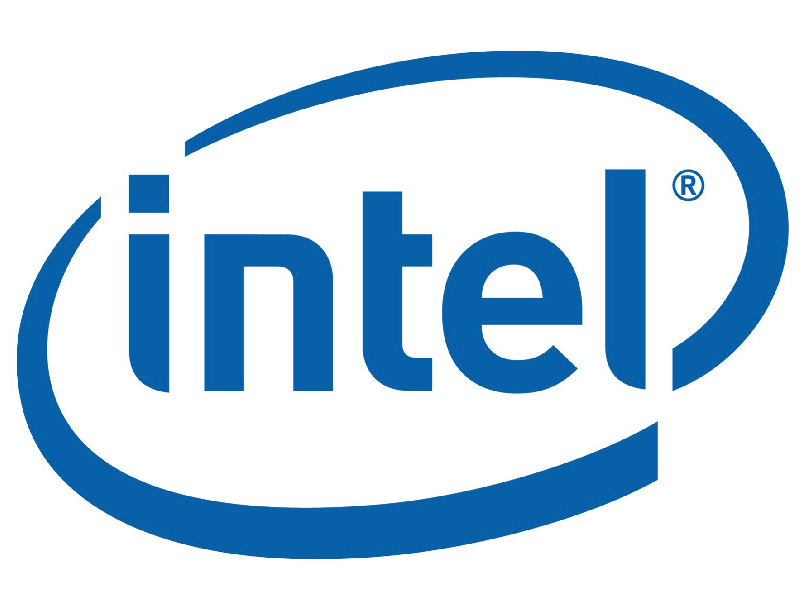Intel May Show Ivy Bridge CPUs at Computex
Intel's upcoming Ivy Bridge platform may show its face come May 30.

Intel is reportedly gearing up to showcase its 22 nm next-generation processors based on the Ivy Bridge architecture soon, possibly during Computex Taipei 2011 taking place from May 30 to June 4. Actual processors aren't expected to hit the market until the first half of 2012, keeping in tune with Intel's yearly release schedule.
Ivy Bridge's appearance seems rather premature, given that Intel just launched the 32 nm Sandy Bridge platform during CES 2011 back in January. However, the architecture will remain similar tos Sandy Bridge, but reduced down to a smaller die thanks to 22 nm manufacturing. Thus, the Ivy Bridge chips will be smaller but are expected to provide an increased performance per watt. The processors will also be compatible with the LGA1155 interface.
Additional reports indicate that Ivy Bridge will bring a DirectX 11-compatible graphics core combined with the second-generation QuickSync video technology. Ivy Bridge will also reportedly have 24 execution units compared to 12 today, and include HDMI 1.4 output. Integrated subsystems are also expected to receive improvements with the addition of native support for 1600 MHz DDR3 and PCIe 3.0. Overall performance is expected to increase 20 to 30-percent over the equivalent Core processors released in 2011.
Stay On the Cutting Edge: Get the Tom's Hardware Newsletter
Get Tom's Hardware's best news and in-depth reviews, straight to your inbox.
-
jimmysmitty Even with BD it might not pan well for AMD. I have hopes for BD but have a feeling that on a core per core, clock per clock level, Sandy Bridge will be faster and therfore Ivy Bridge will be too.Reply
As for efficiency, I doubt AMDs first generation HK/MG and early 32nm process will be more efficient than Gulftown let alone Sandy Bridge. And Intels 22nm looks to be amazingly efficient.
Add in the fact that Ivy Bridge will drop into current LGA1155 mobos and its hard to say where AMD will be with BD since BD will only work on AM3+. -
eklipz330 omg 22nm already? i honestly thought that transistor shrinks were going to slow down like hell after 32nm.... but WOW!!!Reply
and for those who don't know, the longest molecule strand known to man is 22nm long!! i forget where i read it though. but it was on the internet, so you know it was the truth -
kcorp2003 I was planning my next build around the New Micro architecture (Haswell) in 2012-13 but given the situation (BF3 namely) i might just go with Ivy bridge. If AMD get their act together with Bulldozer and their HD7000 series on the 28nm chip for Q4 2011, then its AMD build all the way. But thats wishful thinking I am seeing more of a Ivy bridge + HD7000s in my future build.Reply -
HansVonOhain kcorp20034nm by 2022.Reply
You fail. By the time you reach those sizes, the interconnect paths are going to be limited by electron traveling. Those are the complications of Quantum Computing. By that time, there is going to be a new medium built instead of silicon wafer. -
@jimmysmittyReply
now if i recall correctly Brazo (fusion) was originally planned for 32nm but due to fab issues had to use 40 odd nm, AMD instead of growing the die size decided to optimize the chip instead and was able to achieve comparable performance without growing the die size at all, that tells me that fusion (in the brazo guise) has significant headroom for when it does go 32nm
yes current gen AMD chips are behind the curve on performance but there is a significant amount of real estate that becomes available when they go to 32nm, just filling that out with transistor count will get you some performance boost, but with an optimized new architecture there is potential for some real good performance gains to be had, not saying they will deliver just saying logically it's plausible -
jprahman AMD certainly has their work cut out for them. Bulldozer's release in a few months will be AMDs rollout of their 32nm fabricated chips, and now Intel is already going to be releasing 22nm chips ~6-9 months later. Intel's massive R&D budget is showing up quite clearly.Reply
kcorp20034nm by 2022.Not going to happen. After you pass a certain component size quantum tunneling get so bad that further process shrinks are nearly impossible. Basically quantum tunneling means that electrons pass through the insulating dielectric materials and large leakage currents result, much higher than what we currently see. If I recall correctly 16nm is the smallest process that can be achieved with conventional silicon technology. Further miniaturization and clock speed increases will require the use of new materials like graphene.